NORTH WALES COAST RAILWAY:NOTICE BOARD
Rheilffordd arfordir gogledd Cymru: Hysbysfwrdd
15 March 2021





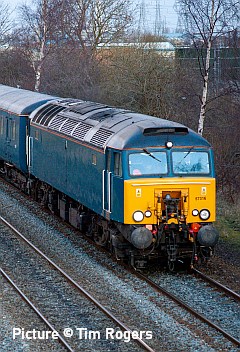
Forthcoming events
(see also our Calendar page for venues)
Note: we have removed all entries relating to meetings as the events are cancelled.
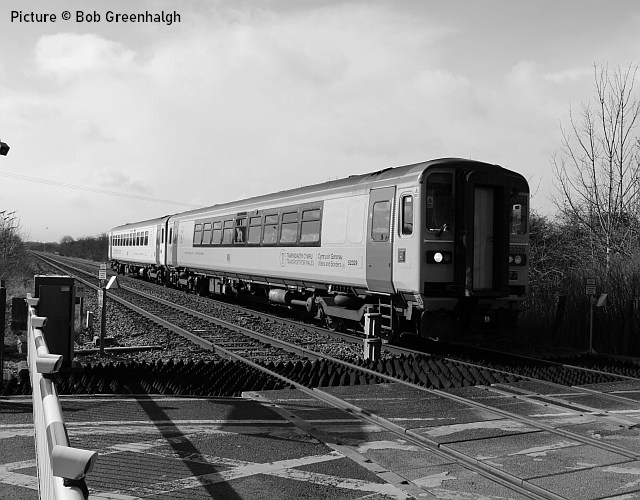
153 329 and 153 306 are about to pass Green Lane as they head for Chester, Saturday 13 March. Picture by Bob Greenhalgh.
Press Release by the Llangollen Railway Trust, 16 March
News pictures
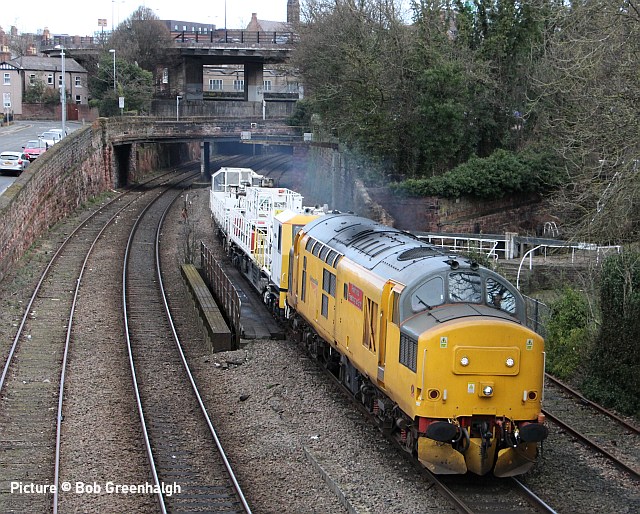
97 302 and DR98003 pass Northgate Locks, 9 March (Bob Greenhalgh).
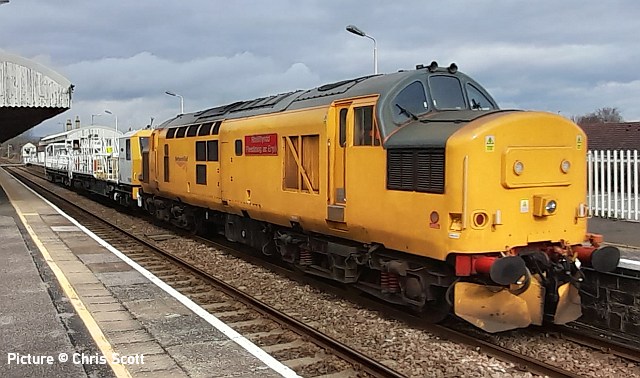
The working was to convey an overhead line maintenance MPV from Crewe Electric Depot to Swindon. Chris Scott photographed the train hammering through Gobowen Station, 12 minutes early at 11.02am (Chris Scott).
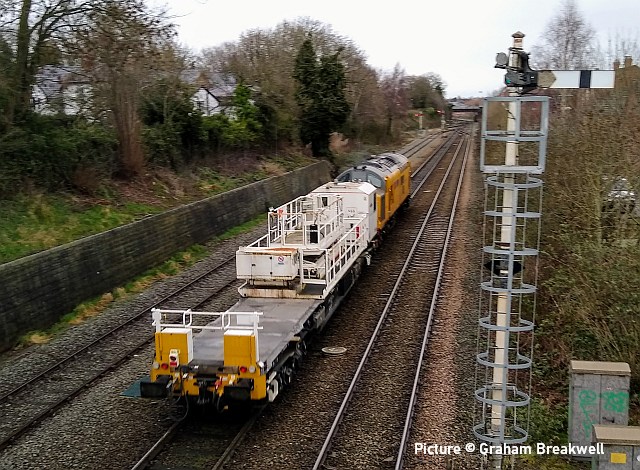
The following day, the train returned - or was it a different vehicle? These MPVs normally work in pairs. Seen near Sutton Bridge Junction by Graham Breakwell.
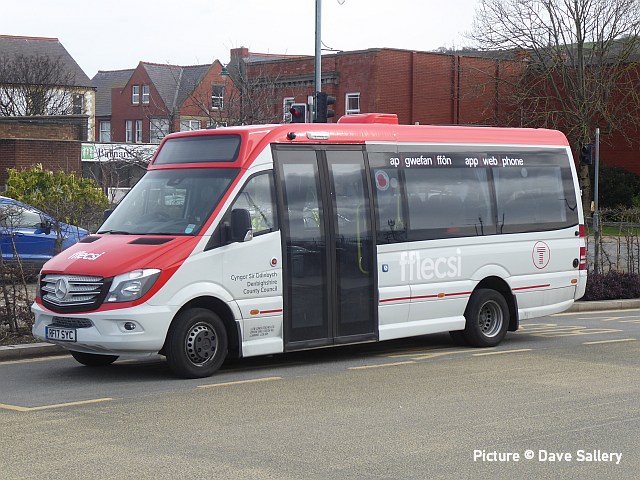
Transport for Wales branding is speading to buses, as shown by RF11 SYC, a new vehicle for the 'Fflecsi' on-demand service in Prestatyn. The actual operator is Denbighshire County Council (Dave Sallery).
On the subject of liveries, we read that the first TfW-liveried (and refurbished) Class 150 train has recently taken to the rails.
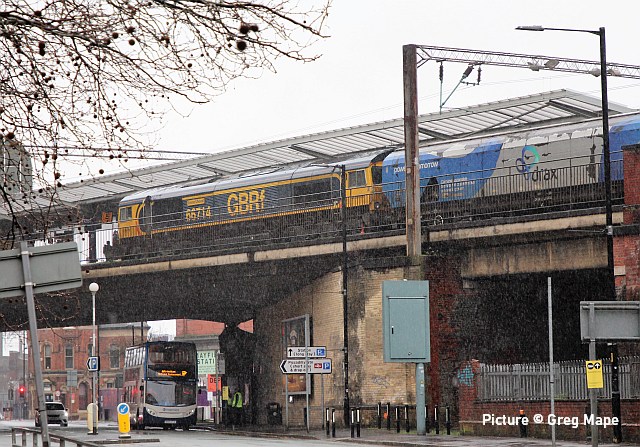
A Liverpool - Drax biomass service, diverted on Sunday 14 March due to on-going engineering work, makes its way past Manchester Piccadilly platform 13, hauled by 66 714 Cromer Lifeboat (Greg Mape). The April issue of Today's Railways UK, on sale now, has a very useful and comprehensive article about the GBRf Class 66s, a fleet which us about to reach its 100th loco.
From Dave Sallery's archive
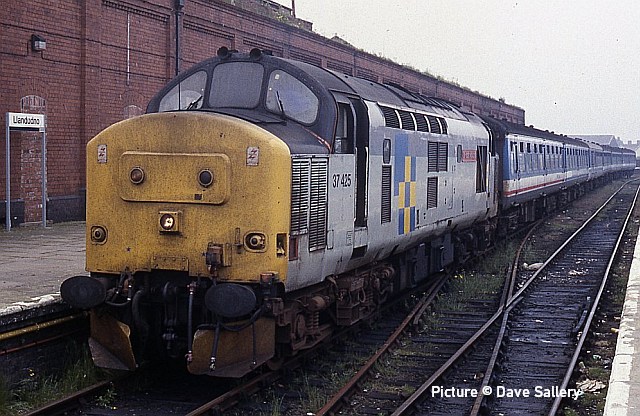
37 425 Concrete Bob in Llandudno on an arrival from Birmingham, 10 May 1993; ex-Network South East coaches not yet repainted.
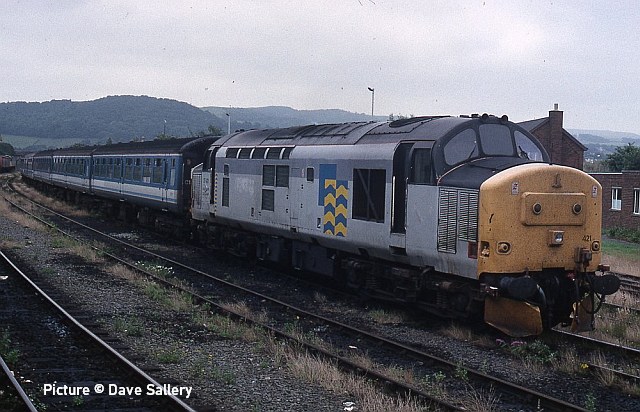
37 421 in Llandudno Junction sidings, 20 July 1993.
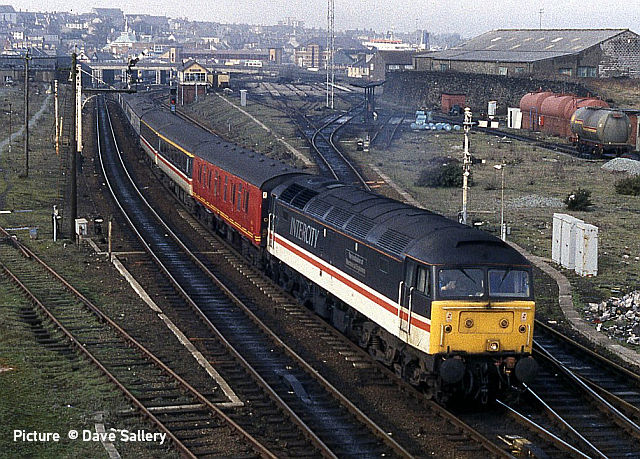
47 841 Institution of Mechanical Engineers leaving Holyhead on 3 March 1991, not long after demolition of the loco shed building. Years later this loco was transferred to DRS. After a long period in store was purchased by Locomotive Services owner Jeremy Hosking, and is currently a static exhibit in the former Tri-Ang warehouse in Margate.
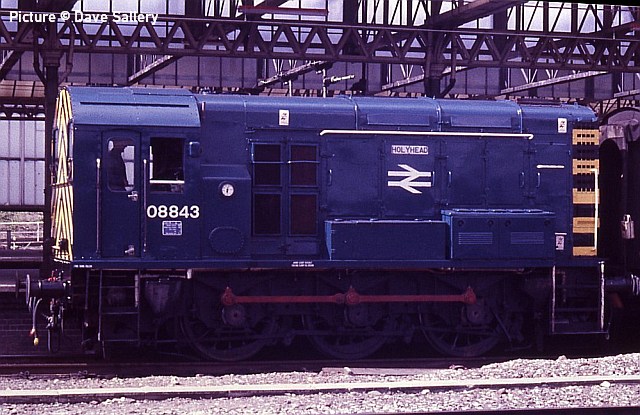
Former Holyhead shunter 08 843, photographed at Crewe, 20 April 1998.
On Class 31s and Headcodes
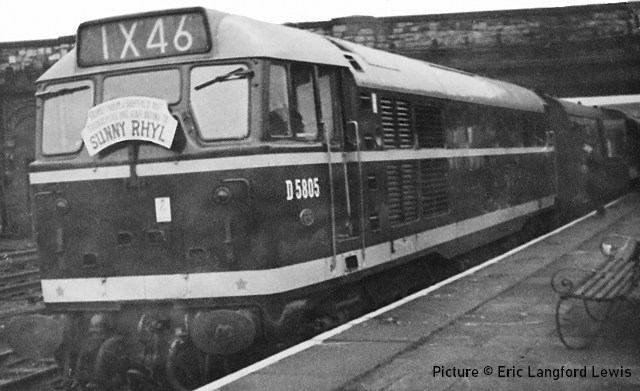
Thanks to everyone who has written in about the earliest Class 31 in North Wales, and the significance of headcodes. Steve Morris offers the above picture from his collection, taken by the late Eric Langford Lewis on 27 May 1962, which pushes back the 'earliest date' somewhat.
Two trains ran that day from Grimethorpe to Rhyl, for rail staff and their families, worked by Class 31s (Brush type 2s as they were known at the time) from Darnall depot. the locals were D5805 (31 275) and D5825 (31 292).
Steve writes: 'As far as the appearance of D5824 (see last issue) is concerned the date I have is Sunday 9 June 1963 with a starting point of Chesterfield. Having said that I can not recall where I got the information from so there remains a degree of uncertainty around that one.
'Out of interest, the next class 31 workings across the Coast did not take
place until the 1980s, an early example being 31 228 on the Bangor - Manchester empty newspaper train. The first recorded visit as far as Holyhead I have on record was on 15 November 1984 when 31 144 arrived on a Welded Rail train before returning east light-engine.'
The subject of headcodes carried by excursions is a complex subject, because the rules have changed over the years. Today, an excursion will be allocated different numbers for the outward and return workings, but when the system was instituted in the pre-computer era of 1962, the same headcode (which in those days was displayed on the front of the train) was used in both directions. It was said that - among other benefits such as saving numbers - it helped excursionists to catch the right train home.
The use of the letters 'X', 'Z' and 'T 'in the second position for excursions has also varied. A London Midland Region Document issued in 1962 specifies 'T' or 'Z' for excursions local to the LMR, and 'X' for inter-regional ones, but leafing through a Special Traffic Notice from 1968 we find an excursion from Leeds (Eastern Region) to Manchester Belle Vue (London Midland) listed as '1Z37'. On the cover of the notice (and another from 1976) it says that 'T' or 'L' are special trains running within the London Midland Region and 'Z' is for inter-regional trains. Make your mind up! 'X' is apparently now reserved for unusually special workings such as the Royal Train.
Looking back: Llangollen 2009-2014 - with David Pool
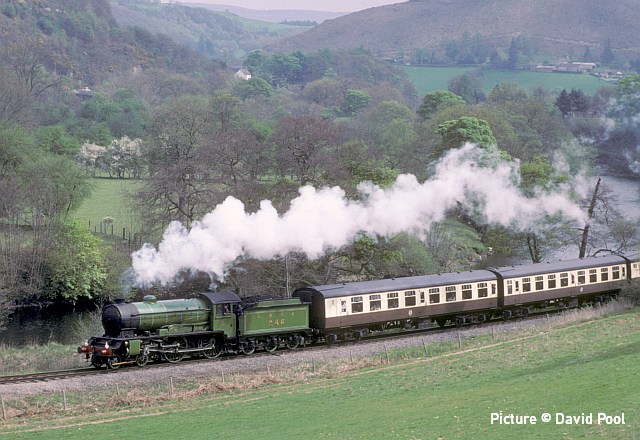
LNER Class D49 No.246 Morayshire was another visitor for the Gala on 24 April 2009. It was built at Doncaster in 1928 and designed by Gresley. After the 1946 LNER renumbering it became 2712, and eventually was 62712 in British Railways. It is owned by the National Museums of Scotland, and appeared at Shildon in 1975, after which it was based at Falkirk and used on Steam Specials in Scotland, before moving to Bo’ness for a major overhaul, where it was based, and further work was done after 2011 when it appeared in BR black as 62712.
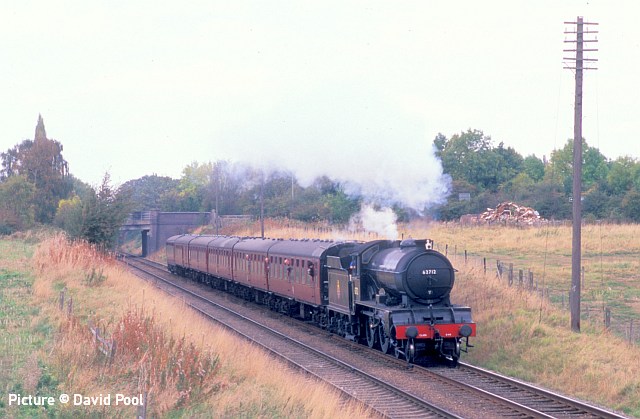
I remember the Class D49 locomotives in the mid 50s, when I was on a family holiday at Scarborough, but I never saw Morayshire until Shildon. When it visited the Great Central Railway it provided me with an opportunity to see it as 62712 and photograph it at Woodthorpe on 2 October 2014. It later moved to Llangollen for a heavy overhaul, but difficulties with the work led to its removal from Llangollen, and funds are now being raised to enable it to return to steam.
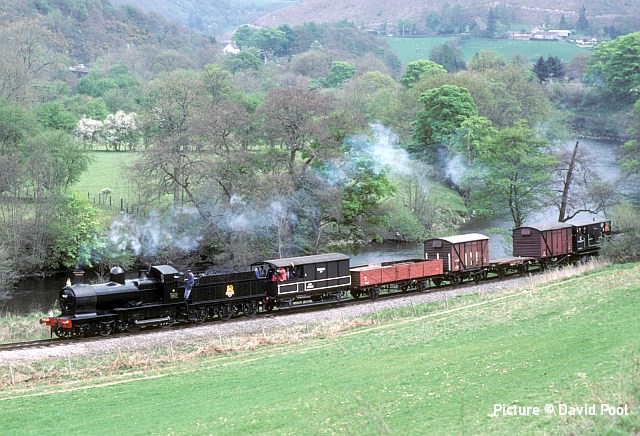
Also on 24 April 2009 at the same location alongside the River Dee, the “Dukedog” 9017 was on a demonstration freight train. These locomotives were built by the GWR between 1936 and 1939, using the boilers of withdrawn “Duke of Cornwall” class locomotives and the frames from withdrawn “Bulldogs”. At first they were numbered in the 32XX series and given the names of Earls, but later the names were removed and they became the 90XX class, regularly seen on the GWR Cambrian lines.
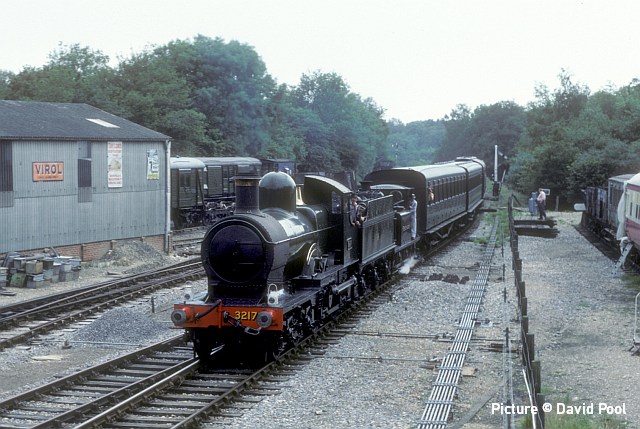
In the early days of its preservation 9017 went to the Bluebell Railway, where it was given its original number of 3217 and the name Earl of Berkeley. It is approaching Horsted Keynes on 26 June 1983, double heading a train with a Stroudley Terrier No. 72 Fenchurch. The latter was 32636 in BR days, mostly based in the Brighton area. The Terriers are beautifully proportioned locomotives, but when sandwiched between 3217 and the coaching stock Fenchurch looks decidedly out of place!

The Class 141 “Pacer” Railbuses were found mostly in Yorkshire, and 141 113 is in West Yorkshire livery on 23 June 2012 approaching the foot crossing beyond Carrog. The destination of Corwen is rather ambitious, since the track had only reached as far as Bonwm at that time. The bodies of the Class 141 units are relatively narrow, as on the prototype Class 140s, being derived from the Leyland National bus concept. The more familiar “Nodding Donkey” class 142 units are a little wider, with detailed improvements over the class 141.
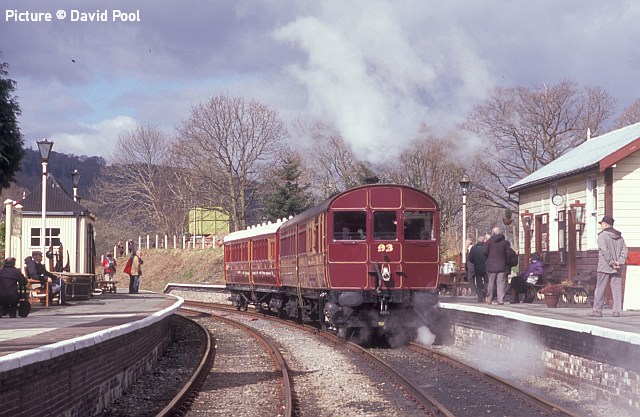
The GWR Steam Railmotor No.93 was originally built in 1908, and ran until 1934 when the steam bogie was removed and it was converted to an Auto Trailer No.212 It was then used as a Works coach and Staff Accommodation, somehow surviving until eventually it was rescued for preservation in 1970, by then little more than a body shell. The fascinating story of its restoration is described in the book “Railmotor”, by Robin Jones, together with the history of its accompanying coach No.92. The colour scheme of red is appropriate for the early period of its life, as is the colour of white for the roof, although the latter is not a good choice for anything powered by steam. My photograph of No.93 and No.92 at Glyndyfrdwy was taken over the level crossing gates, and the tail lamp confirms the train is moving away from me!
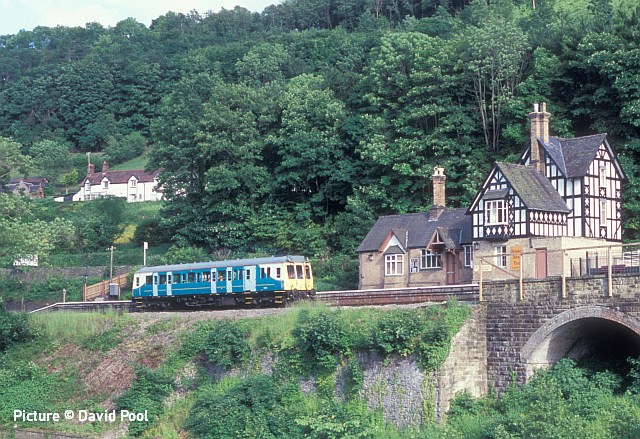
“Bubblecar” 121 032 in Arriva Wales livery was a surprise visitor to Llangollen on 21 June 2013. It had been used on the Cardiff Bay branch shuttle, and more recently several other single units have found use on other lines, although the number and type of doors do not meet modern requirements. Berwyn station makes a nice backdrop to the image, especially so with the single unit not in front of the station buildings.
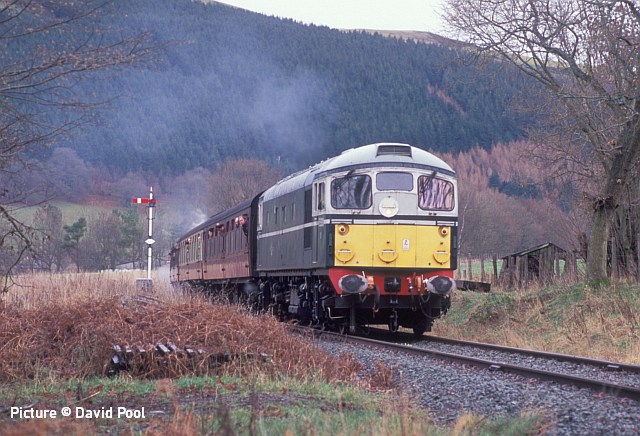
The Class 26 D5310 has seen regular use at Llangollen, with steam heating capabilities and a reliable power unit. On 4 January 2014 it is leaving Carrog with a shuttle to Bonwm, dragging 3802 on the rear. The Class 26 locomotives were generally seen on all the lines from Inverness, often in pairs working the heavier trains through Perth to Edinburgh. Later they appeared in the Ayrshire coalfields district, and in 1989 I managed to photograph a pair of 26s working a steel coil freight as far South as Warrington.
Barmouth Bridge - report by Ian Wright
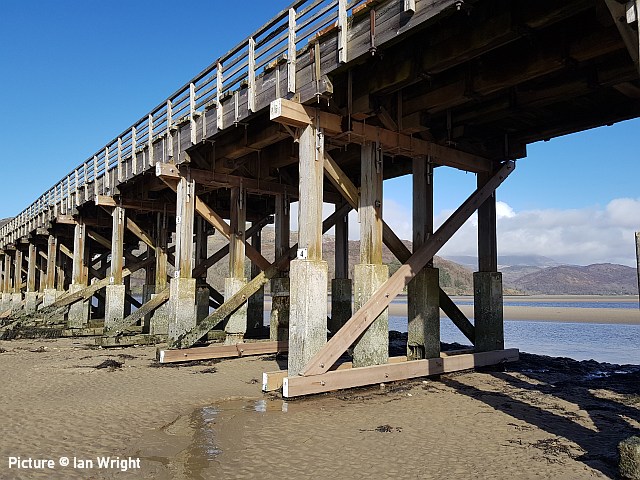
On 25 February I went for a walk under the bridge on way home from work to have a look at what has been done during the recent closure and the upright that was replaced after the little fire. Looks like there is plenty more to do.
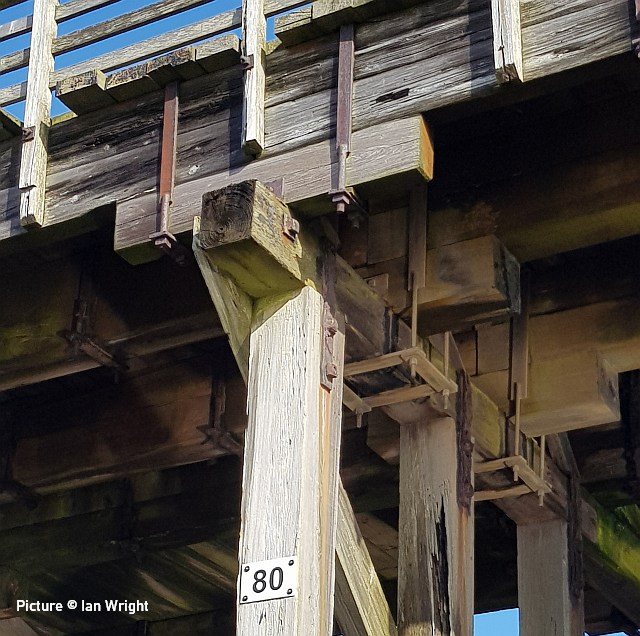
From Network Rail's plan for the planned bridge closures: 'At over 150 years old, the viaduct is in poor condition. Many of the timber elements of the viaduct have decayed significantly over time and a large proportion of the metallic elements have corroded.
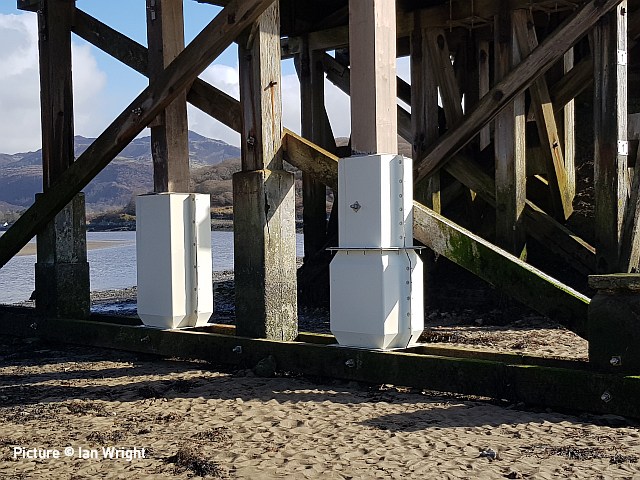
'We are sorry for any disruption our work willcause, but there is simply no safe way to carry out the restoration without closing Barmouth Viaduct and the adjoining walkway.
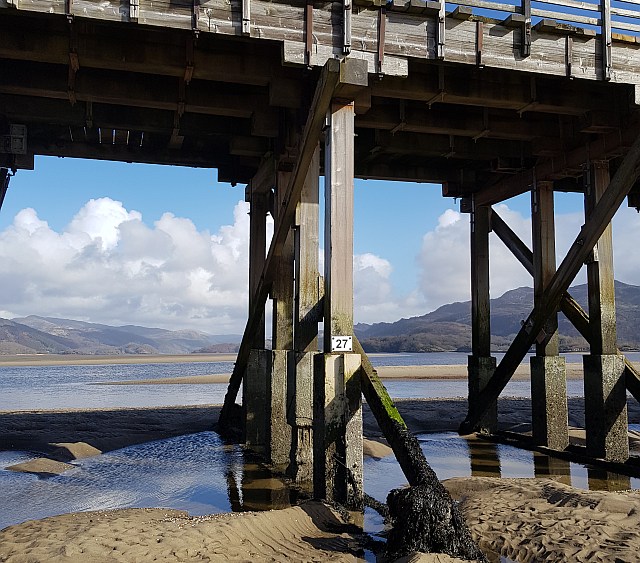
'Our programme will see us completely restoring the viaduct in a way that doesn’t threaten its industrial heritage and its Grade II* listed status. This means that we will replace its components on a ‘like-for like’ basis so that it retains its magnificent appearance.'
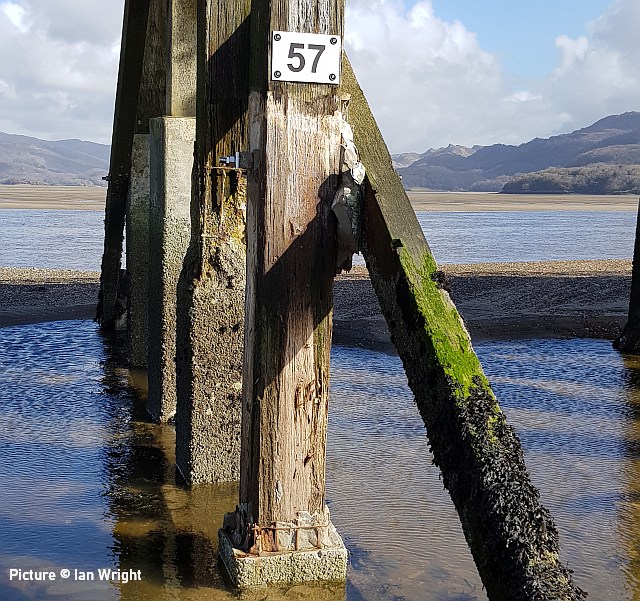
The bridge will be closed from 12 September to 12 December 2021, and again from September to December 2022.
Seen on a bike ride - images by Greg Mape
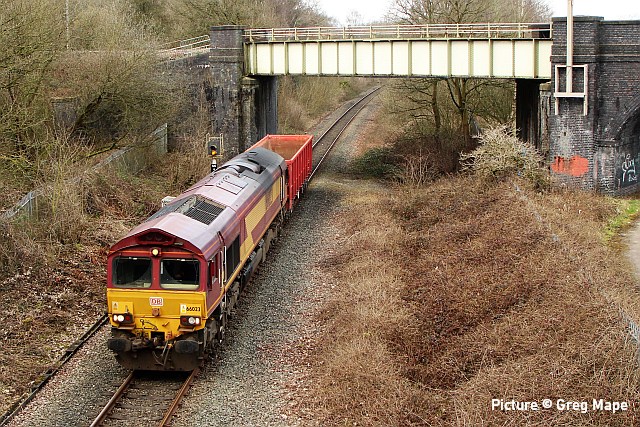
The twice-weekly Warrington Arpley -Tunstead working on Monday 15 March with 66 023 in charge of one wagon. The line going over the top is the Styal line, this train is on the Northenden to Hazel Grove line, taken from an overbridge on the A34 (reached by bike). This working on Friday 12th March had no wagons - once a trip working for wagonload traffic, these days it serves only to transport wagons needing maintenance.
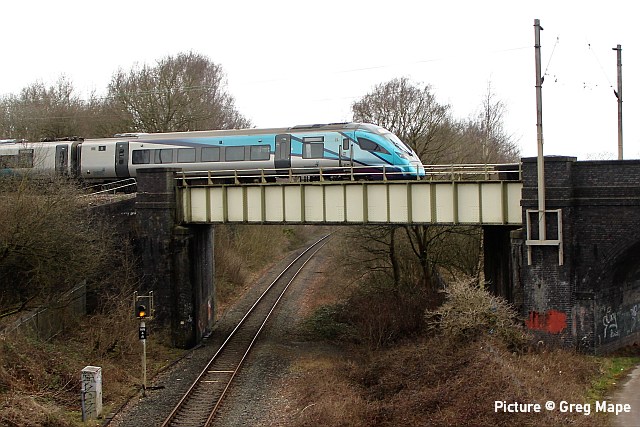
This Class 397 was from Manchester Airport to Edinburgh.
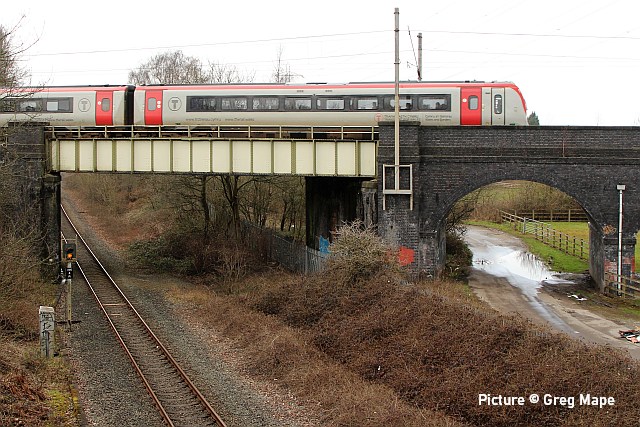
A Llandudno - Manchester Airport Class 175. This service is currently under threat in proposals by Network Rail to divert it to Manchester Victoria or to Piccadilly via Northwich to reduce congestion. Needless to say, authorities in Wales are not happy about this. The Class 175s, although only just over 20 years old, do not feature in the plans of Transport for Wales once new stock on order is delivered.
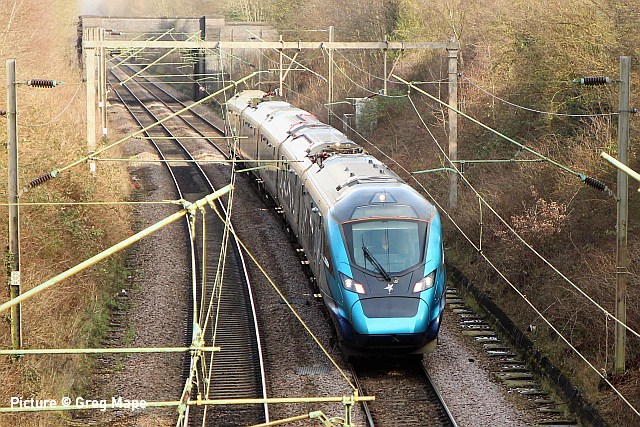
Another Class 397 approaching Heald Green under a web of wires, inbound from Edinburgh to Manchster Airport. Numbers on the front of units appear to be, like yellow fronts, a thing of the past.
North Wales Coast home page | Archive | Previous Notice Board